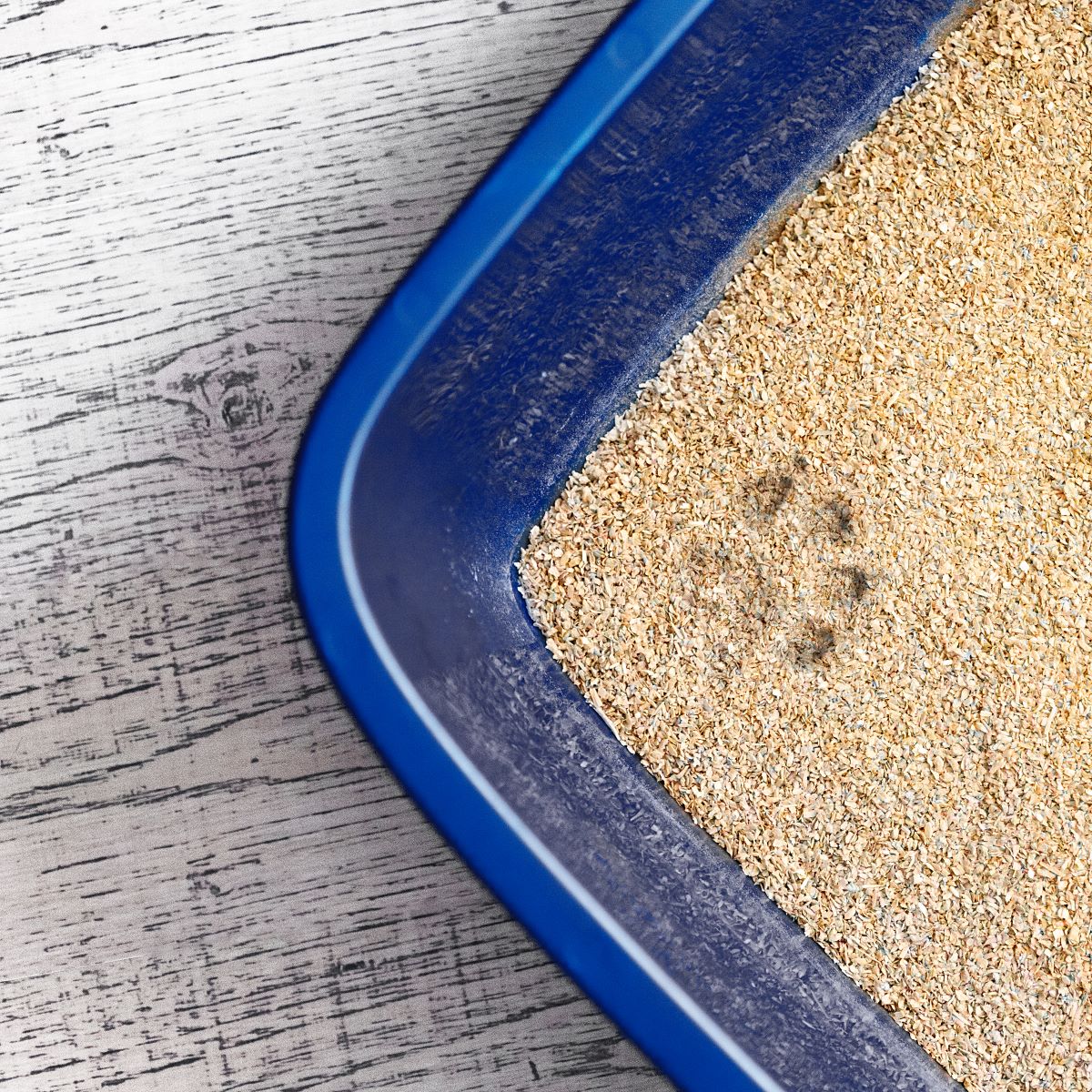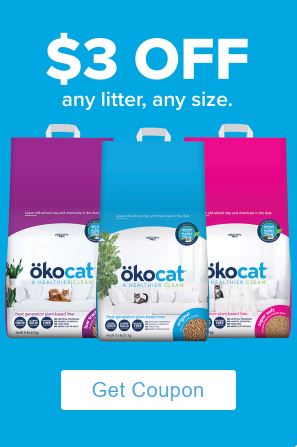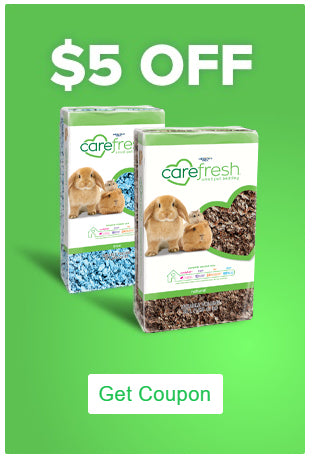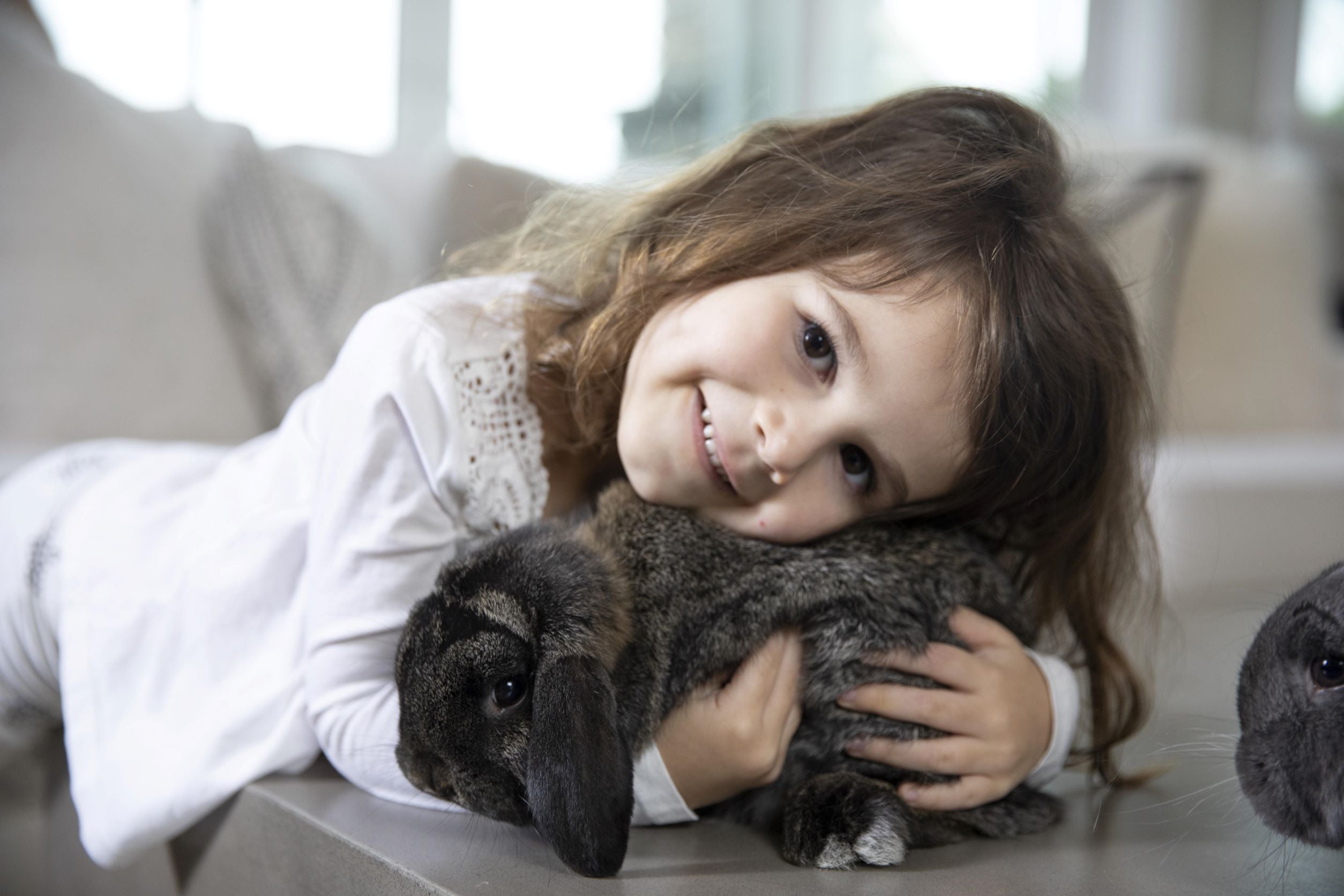Why Clay Cat Litter Is Bad for Your Cat—and the Planet
If you’ve ever owned a cat, you’ve probably used traditional clay-based cat litter at some point. It’s cheap, widely available, and does the job when it comes to clumping and odor control. But beneath its convenience lies a host of environmental and health concerns that many pet owners aren’t aware of. Let’s dig into why clay cat litter may not be the best choice—for your feline friend or for the Earth.
1. Environmental Cost: Strip Mining and Waste
Clay cat litter is typically made from sodium bentonite, a type of absorbent clay that forms clumps when wet. The problem? This clay is obtained through strip mining, a destructive process that removes large areas of topsoil and vegetation, permanently damaging ecosystems and contributing to soil erosion and habitat loss.
Each year, millions of tons of clay are mined solely for cat litter. Unlike biodegradable litters (such as those made from paper, wood, or corn), clay litter does not break down in landfills. It sits there indefinitely, contributing to the growing problem of pet waste pollution.
2. Toxic Dust and Respiratory Issues
Many clay litters produce a fine dust—especially when poured or stirred. This dust can contain silica, a known carcinogen when inhaled over long periods. For humans, particularly those with asthma or allergies, this dust can be irritating. But for cats, who spend significant time in close contact with their litter boxes, the risk is even greater.
Cats can inhale or ingest this dust during grooming. Over time, this may contribute to respiratory problems, especially in kittens, older cats, or those with pre-existing conditions.
3. Chemical Additives and Fragrances
To make clay litter more “appealing” to consumers, many brands add chemical fragrances to mask odors. While the smell might be pleasant to us, cats have a much stronger sense of smell and may find the scent overwhelming or irritating. Some additives may even trigger allergic reactions or discourage your cat from using the litter box altogether.
Furthermore, the chemicals used in some scented litters may be harmful if ingested or absorbed through the skin over time—something to consider for cats with sensitive paws or grooming habits.
4. Not Flushable or Compostable
Clay litter should never be flushed down the toilet—it can clog plumbing and septic systems. Nor is it compostable. Disposing of clay litter means bagging it in plastic and sending it to a landfill, where it will sit for centuries. By contrast, many natural litters are biodegradable and even compostable (when disposed of properly and without pet waste contamination).
5. There Are Better Alternatives
Fortunately, there are a growing number of eco-friendly cat litter alternatives that are better for your pet and the planet. These include:
okocat Wood-based litter – Naturally deodorizing and biodegradable.
Recycled paper litter – Soft on paws and highly absorbent.
Wheat or corn litter – Clumping, compostable, and often flushable (check your local laws), however, because they are food based, mold may grow.
Coconut or walnut shell litter – Sustainable and effective at odor control.
These options are not only better for the environment, but often safer and healthier for your cat as well.
In Conclusion
Clay cat litter may be the norm, but it comes at a significant cost—to our environment and potentially to our cats’ health. As awareness grows, so do the options for safer, more sustainable litter. Making the switch to an eco-friendly alternative is a simple step that benefits your feline companion and the planet they call home.
Read MoreThe Joy of Cat Ownership: Why Feline Friends and ökocat Natural Cat Litter Make Life Better
There’s something undeniably comforting about the quiet presence of a cat in your home. Whether they’re curled up in your lap, perched on a windowsill, or darting around in a sudden burst of energy, cats bring a special kind of companionship that’s equal parts low-maintenance and high-reward. If you're considering adding a furry friend to your household, here's why cat ownership—and choosing products like ökocat natural cat litter—can make your life both happier and easier.
1. Low-Maintenance Companions
Cats are famously independent. They don’t require daily walks or constant attention, making them ideal for busy individuals, apartment dwellers, or anyone who prefers a more relaxed pet relationship. Feed them, clean their litter box regularly, and give them affection when they ask for it—and they’ll thrive.
2. Emotional and Health Benefits
Numerous studies have shown that having a cat can reduce stress and anxiety. The simple act of petting a cat releases feel-good hormones like oxytocin, and their soothing purrs can help lower blood pressure. In fact, cat owners are known to have a lower risk of heart attack and stroke compared to non-cat owners.
3. Great for Small Spaces
Cats don’t need a yard or large open spaces to be happy. With a few vertical options like cat trees or shelves and a cozy sleeping nook, your feline friend will be perfectly content—even in a studio apartment.
4. Clean and Quiet
Unlike some pets, cats are naturally clean animals. They groom themselves frequently and are generally quiet, making them excellent roommates. Their litter habits, when supported with the right products, make cleanup easy and odor-free.
5. The ökocat Advantage
Speaking of cleanliness—one of the most underrated aspects of cat ownership is choosing the right litter. That’s where ökocat natural cat litter stands out. Made from sustainably sourced, biodegradable wood fiber, ökocat is a dust-free, chemical-free alternative to traditional clay litters. Here’s why it’s a favorite among cat parents:
Superior Odor Control: The natural wood fibers absorb moisture and trap odor without artificial fragrances.
Dust-Free and Low-Tracking: Unlike clay litter, ökocat doesn’t create clouds of dust, keeping your air and surfaces cleaner.
Eco-Friendly: It’s biodegradable and compostable, reducing your environmental impact.
Lightweight and Easy to Clean: Easier to pour, scoop, and dispose of—ökocat makes litter box maintenance a breeze.
6. A Greener, Happier Home
By combining the joy of cat companionship with eco-conscious products like ökocat, you’re not just improving your quality of life—you’re making a responsible choice for the planet, too. Less waste, cleaner homes, and healthier pets: it’s a win-win-win.
Final Thoughts
Owning a cat is one of life’s simpler pleasures. They ask for little but give so much in return. And with the right tools—like ökocat natural cat litter—you can enjoy all the love and comfort they bring, without the mess or hassle. Whether you’re a first-time cat owner or a lifelong feline fan, one thing’s certain: life is better with a cat by your side.
Read More5 Ways to Keep Your Pet Healthy and Happy While Traveling
Image by Eddie K
Imagine you’ve packed your bags and loaded the car, and your furry companion is already giving you that “where are we going?” look. Traveling with pets sounds like fun until you’re stuck on the freeway with a panting pup trying to escape their carrier. Whether you’re road-tripping across states or heading out for a weekend getaway, your pet’s well-being shouldn’t take a backseat.
Keeping your pet healthy and happy while traveling isn’t just about tossing a chew toy in the back seat. It’s about giving them comfort, care, and everything in between, from fresh water to a calm mind.
Curious how to make travel easier for both of you? Stick around for five clever ways to make every trip smoother, safer, and a whole lot happier.
5 Ways to Keep Your Pet Healthy and Happy While Traveling
1. Maintain a Consistent Walking Routine
Your dog doesn’t care whether the destination is the beach or the mountains. What they really want is a chance to sniff the grass and stretch their legs. Skipping walks during travel might seem like no big deal, but your pet definitely feels the difference. Regular movement is not just about staying fit. It helps them stay calm, mentally engaged, and less likely to show signs of stress in new places.
If you are driving for long periods, try to stop every couple of hours at a rest area or quiet park. These pauses are more than just bathroom breaks. They give your pet a chance to release built-up energy, explore unfamiliar surroundings, and feel a bit more grounded. For dogs in particular, sticking to a walking routine is essential for overall pet wellness and stress relief.
You can also make your routine more earth-friendly. Many pet owners are making the switch to compostable dog poop bags as a low waste option for daily walks. They are easy to carry and gentler on the environment, making every stop cleaner for you and your dog.
2. Keep Your Pet Hydrated
Your pet might not be able to say they’re thirsty, but their body will show it. Dry lips, tired eyes, and a sluggish mood could all be signs that they need a drink. When you are on the move, staying hydrated is just as important for your pet as it is for you, especially during warm days or long stretches on the road.
To make things easier, always travel with a bottle of fresh water and a collapsible bowl. These bowls barely take up space and are perfect for quick sips during rest stops, hikes, or breaks at gas stations. If your pet tends to be fussy about drinking, try making the water more enticing. A splash of low-sodium chicken broth or a bit of tuna juice often does the trick.
And here is a smart tip. Freeze a water bottle the night before your trip. As it melts slowly throughout the day, your pet gets a steady source of cool, clean water.
3. Bring Your Pet’s Regular Food and Treats
Imagine being on vacation and suddenly switching to a completely new diet. Not ideal, right? The same goes for your pet. Sticking to their usual food and treats helps prevent upset stomachs and keeps their routine steady. Travel already introduces enough change, so keeping meals familiar gives your pet one less thing to stress about.
It is always a good idea to pack more than you think you will need. Whether your trip gets extended or you end up far from a pet store, having extra food and treats can save you from scrambling. A few bonus snacks also come in handy when your pet needs a little comfort during unfamiliar moments.
For packing, airtight containers do wonders. They keep food fresh, prevent spills, and make mealtime easier no matter where you are. If you are staying in a hotel or visiting different stops, portion out meals ahead of time. This keeps feeding simple and avoids overfeeding. Just remember, skip the big meal right before hitting the road. A light snack a few hours in advance is better for preventing motion sickness.
4. Groom Your Pet Regularly During Travel
Every adventure brings a little dirt along for the ride, especially when your pet is tagging along. From grassy fields to sandy paths, it's easy for fur to pick up dust, dander, or the occasional mystery smell. Staying on top of grooming keeps your four-legged companion comfortable and cuts down on irritants that can make them itchy or uneasy.
Make room in your bag for a basic grooming kit. A compact brush, a comb, and a few cleaning wipes go a long way. Giving your pet a quick brush each day helps manage shedding and keeps their coat smooth and knot-free, especially if they have longer fur. It is also a great way to spot things like ticks or bits of debris after a day of exploring.
When water is hard to come by, reach for a no-rinse cleanser. A spray or foam can freshen up your pet in a pinch and keep them looking and feeling their best while you're both on the move.
5. Keep Your Pet Comfortable in the Car or While Traveling
Your dog may not ask for extra legroom, but they definitely feel the difference between a cramped ride and a cozy setup. Long hours in the car can leave your pet stiff, restless, and anxious. A little planning goes a long way in keeping them relaxed and content throughout the journey.
Set up a designated chill zone before you even turn the key. Whether it is a soft mat, their usual bed, or a crate they are familiar with, having a personal space helps your pet settle down. Add a favorite toy or blanket into the mix to give it a familiar feel.
Make sure the car stays at a comfortable temperature, especially on warmer days. Roll down a window slightly or use the AC when needed. And while they might look peaceful tucked in the backseat, pets need to get out and stretch every few hours. These quick breaks are great for movement, fresh air, and a bathroom stop.
Lastly, always keep safety in check. Use a seatbelt harness or secure crate to keep your pet in place.
Travel with Your Pet in Comfort and Style
Traveling with your pet can be a joyful experience when you plan thoughtfully. By focusing on hydration, regular grooming, and sticking to familiar routines, you help your furry companion feel calm and cared for throughout the trip. A relaxed pet makes for a much smoother ride, giving you the freedom to enjoy the journey with fewer worries.
For a short trip or a longer adventure, what matters is being ready. Pack the essentials, think ahead about their comfort, and make space for their needs on the road. With a little care, every trip becomes a shared experience worth remembering.
Read MoreThe Joy of Guinea Pig Ownership: Benefits, Convenience, and the Perfect Habitat with Carefresh Natural
If you’ve ever considered adding a small, furry friend to your household, guinea pigs are an excellent choice. These gentle, affectionate animals are not only adorable but also make surprisingly rewarding pets. Whether you're a first-time pet parent or looking for a low-maintenance companion, guinea pigs bring a mix of charm, personality, and ease into your life.
Why Guinea Pigs Make Great Pets
1. Gentle and Social:Guinea pigs are known for their sweet temperament. They rarely bite and are very social creatures, often forming strong bonds with their human caretakers. They also enjoy the company of other guinea pigs, making them great for families who want to adopt a pair.
2. Easy to Handle:Unlike some other small pets, guinea pigs are relatively easy to handle and enjoy gentle interaction. With consistent care, they become quite tame and even responsive to your voice.
3. Low Maintenance:While they do need daily care and attention, guinea pigs are not nearly as demanding as larger pets. Their dietary needs are simple (mostly hay, fresh veggies, and pellets), and they don’t require walks or large spaces to roam.
4. Great for Small Spaces:Living in an apartment? No problem. Guinea pigs don’t need a backyard or large room to thrive. A properly sized cage and daily playtime outside their enclosure is more than enough.
Creating the Ideal Guinea Pig Habitat
A comfortable, clean habitat is essential for a guinea pig’s well-being. One of the most important aspects of their enclosure is the bedding, which not only absorbs moisture and odors but also provides a soft surface for them to walk, play, and burrow on.
Why Use carefresh® Natural Paper Bedding?
When it comes to bedding, carefresh® Natural Paper Bedding is a top choice for conscientious guinea pig owners. Here's why:
Exceptional Absorbency: carefresh bedding is made from natural paper fibers that absorb moisture better than other brands of paper bedding, keeping your pet’s environment drier and healthier.
Odor Control: This bedding has superior odor control, making your home smell fresher and reducing the need for frequent cage cleanings.
Dust-Free and Safe: Unlike some bedding types that can produce harmful dust or splinters, carefresh is virtually dust-free and free of harsh chemicals and dyes. It's gentle on sensitive guinea pig feet and respiratory systems.
Eco-Friendly: Made from sustainable, biodegradable materials, carefresh bedding is a great choice for eco-conscious pet owners.
Soft and Comfortable: Guinea pigs love to nest on top of their bedding, and the soft texture of this bedding makes it perfect for their natural behaviors.
Convenience Meets Care
Using a high-quality bedding like carefresh makes routine habitat cleaning quicker and easier. Because it absorbs so well and controls odor, you'll find that your pet’s enclosure stays dry and fresh longer between cleanings—saving you time while keeping your guinea pigs happy and healthy.
Final Thoughts
Guinea pigs are delightful pets that bring joy, companionship, and a surprising amount of personality into any home. With minimal space requirements, manageable care needs, and the right habitat setup—especially one using carefresh Natural Paper Bedding—you’ll find guinea pig ownership to be both convenient and deeply rewarding.
Thinking about adopting a guinea pig? Now’s the perfect time to prepare the coziest little habitat and welcome a new friend into your life!
Read MoreHow to Properly Store Wet Pet Food to Keep It Fresh and Safe
Photo by Abeer Zaki on Unsplash
Feeding your pets the right food is essential to keeping them healthy and happy. Wet pet food, in particular, offers numerous benefits, including enhanced moisture content and better palatability. However, proper storage is key to ensuring that the food remains safe and fresh, both for your pet's enjoyment and health. In this article, we'll explore how to store pet wet food correctly, reduce waste, and keep your pet's meals safe and appetizing.
Why Proper Storage of Wet Pet Food Is Important
Wet pet food, like wet dog food or wet cat food, is packed with nutrients and moisture that help keep your pets hydrated and nourished. However, because of its moisture content, it can spoil faster than dry food, which means improper storage can lead to bacteria growth and a loss of nutrients. It is essential to follow best practices to ensure your pet's food stays fresh and safe to consume.
The Risks of Improper Storage
When wet pet food is exposed to air or left at room temperature for too long, it can spoil quickly. This not only diminishes the nutritional quality of the food but also increases the risk of foodborne illnesses, which can cause vomiting, diarrhea, and poor appetite in pets. Ensuring the food remains properly sealed and stored will help prevent these risks.
Best Practices for Storing Wet Pet Food
Unopened Pet Food: Keep It in a Cool, Dry Place
Before opening a can or pouch of pet food, it's crucial to store it properly to ensure its longevity. The best way to store unopened fresh pet wet food is to keep it in a cool, dry place, such as a pantry or cupboard. Avoid storing it in places where it could be exposed to excessive heat, such as near ovens, stoves, or windows where sunlight can affect its quality.
Check Expiration Dates
While wet pet food can last long when unopened, it's important to always check the expiration date printed on the packaging. Most pet food remains fresh for several months, but it's always better to be safe than sorry. Avoid buying large quantities that could sit around for too long, and ensure you're using the food before it expires.
Storing Opened Wet Pet Food: Keeping It Fresh
Once you've opened a can or pouch of pet food, the clock starts ticking on how long it will remain fresh. Here's how to store the leftovers to preserve their freshness and nutritional value.
Transfer to an Airtight Container
After opening a can or pouch of wet pet food, transferring any leftovers into an airtight container is essential. This prevents exposure to air, which can cause the food to dry out or develop harmful bacteria. Store the container in the refrigerator for up to seven days. However, be aware that while refrigeration will help preserve the food, it may not maintain its flavor and texture for the entire week.
Use a Wet Food Pet Feeder
If you find it challenging to store wet food properly, a feeder could be an excellent option. These feeders allow you to portion out meals, keeping the food fresh for each serving. They're particularly useful for pets who graze throughout the day, ensuring their meals are always fresh and appetizing.
Freeze Leftovers for Long-Term Storage
Freezing the leftover food is a good option if you have more wet food than your pet can consume in a week. Freeze it in small portions that are convenient to thaw and serve. This method ensures that the food doesn't go to waste and can be safely used later. Thaw the frozen portions in the refrigerator, not at room temperature, to avoid bacterial growth.
Signs That Wet Pet Food Has Gone Bad
Even with proper storage, pet food will eventually spoil. It's essential to know the signs of spoiled food to prevent feeding your pet something that could harm them. Here are a few red flags to look for:
Off Smell or Appearance: If the food smells rancid or has an unusual odor, it's likely spoiled and should be discarded immediately. Wet food that has turned a strange color or developed a slimy texture is another indication that it is no longer safe to feed to your pet.
Mold or Discoloration: Mold or discoloration clearly shows that the food has gone bad. Discard any food with visible mold or color changes, as these can indicate the presence of harmful bacteria or mold spores.
Spoiled Texture: Wet pet food should have a smooth, moist texture. If the food has dried out or become excessively watery, it's time to throw it away. A change in texture is a telltale sign that the food is no longer safe to consume.
How Long Can Pet Food Be Left Out?
Pet food should never be left out for extended periods. It is especially vulnerable to spoilage when exposed to room temperature for too long. If your pet hasn't finished their meal within four hours, it's best to throw the food away. Bacteria can grow rapidly in wet food, making it unsafe for your pet to eat after this time frame.
While dry food has a longer shelf life than wet food, it should still not be left out for more than 24 hours. Exposure to air, moisture, and your pet's saliva can degrade the quality of the food, reducing its nutritional value.
Additional Tips for Storing Wet Pet Food
Store in Small Portions
Whenever possible, try to store wet pet food in small portions rather than in large containers. This way, you're only thawing or opening what you need, and the food has less exposure to air. Small portions also ensure that your pet always has access to fresh wet food.
Clean Your Pet's Food Bowls Regularly
Pet food bowls should be cleaned after each use, especially when serving wet food. This will prevent the buildup of bacteria and mold, which can contaminate the food and make your pet sick. Wash food bowls with warm, soapy water and dry them thoroughly before refilling them with fresh food.
Keep the Food Secure
Ensure that your pet's food is kept out of reach. Pets, especially dogs, might try to sneak extra meals or treats. To prevent this, store the food in cabinets or on shelves that are difficult for your pet to access.
To Sum Up
Proper storage of wet pet food is crucial to maintaining its quality, taste, and safety. By keeping wet food sealed in airtight containers, storing it in the fridge, and following proper feeding guidelines, you can ensure that your pet enjoys fresh meals that support its health. Always check expiration dates, and never feed your pet food that shows signs of spoilage. With these storage practices in place, you can confidently serve your pet meals that are both nutritious and safe.
Read MoreFilter - Key Words








 email us
email us